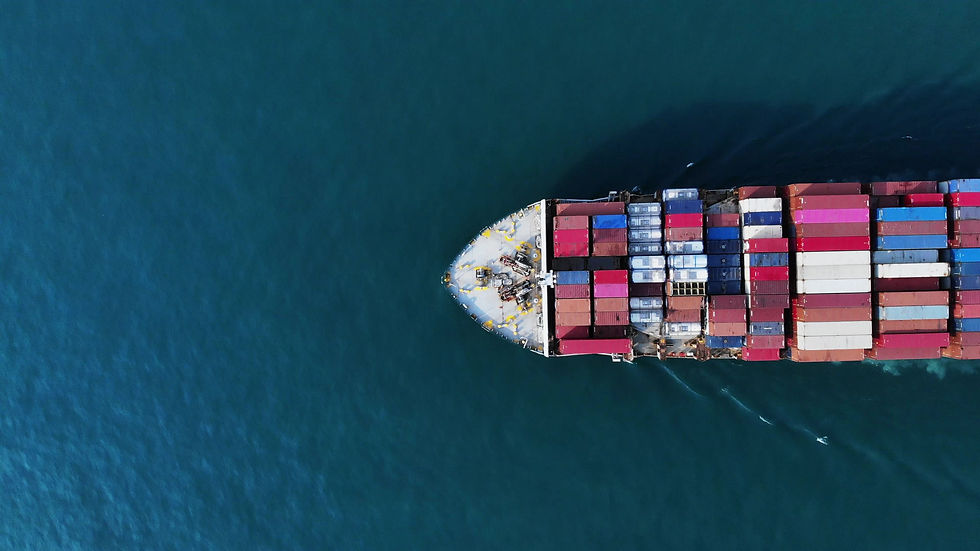CARBON CREDITS
Regulated & Verified
Carbon credits are a market-based mechanism used to reduce global greenhouse gas (GHG) emissions. Each carbon credit represents the right to emit one metric ton of CO₂ or its equivalent in other greenhouse gases. In the marine shipping industry, carbon credits can play a significant role in helping companies offset their carbon emissions and meet both regulatory and sustainability targets.
The ultimate goal of the carbon credit system is to reduce the emission of GHGs into the atmosphere.
360 ENERGY MARINE combines sustainable compliance with performance, offering companies the ability to earn verified/certified carbon credits while increasing operational excellence. We've proudly partnered with Triangle Systems Inc. to provide a registered and regulated, fully digital carbon credit & REC minting platform. This offers the reassurance of true regulation, verification, qualified bank custodians and risk mitigation.


The Journey to Net-Zero Starts Now.
360 ENERGY MARINE CARBON CREDITS
A dedicated information section on 360 ENERGY MARINE’s carbon credit program is currently in development and will be available soon. This upcoming resource will provide detailed insights into how our carbon credit strategy supports full compliance, promotes sustainability, and creates added value for our partners. Please check back shortly for updates.
-
=
CO2 Emitter Carbon Credit Net Carbon
CARBON CREDITS EXPLAINED
-
The United Nations allows countries a certain number of credits
-
Each nation is responsible for issuing, monitoring, and reporting its carbon credit status annually.
-
Governments allow companies to emit a set amount of GHGs before needing to purchase credits.
-
If emissions exceed limits, they are required to buy credits.
-
If a company purchases too many credits, it can sell the excess on a carbon exchange or marketplace. This system is commonly called a cap-and-trade program.
01
How Carbon Credits Work
For every ton of CO₂ emitted, companies can buy carbon credits from projects that reduce or capture greenhouse gas emissions elsewhere. By purchasing these credits, marine shipping companies can effectively "offset" the emissions from their ships, even if they have not yet transitioned to low-emission fuels or technologies.
02
The Role of Carbon Credits in Compliance
Under international regulations set by bodies like the International Maritime Organization (IMO), the shipping industry is required to reduce its carbon footprint over time. Carbon credits can help companies meet these targets, especially if transitioning to cleaner fuels or technologies is not immediately feasible.
-
For example, if a shipping company cannot reduce emissions quickly enough, they can purchase carbon credits to balance out their emissions.
-
This helps companies comply with regulatory frameworks like the IMO's Initial GHG Strategy, which aims for a 50% reduction in shipping's carbon emissions by 2050 (compared to 2008 levels).
03
Voluntary vs. Compliance Markets
-
Compliance Market: Some regulations require shipping companies to offset a specific amount of emissions using carbon credits.
-
Voluntary Market: Many companies also participate in voluntary carbon offsetting as part of their corporate sustainability goals. They might choose to offset emissions beyond regulatory requirements to enhance their environmental reputation or appeal to eco-conscious consumers.
04
Benefits for the Marine Shipping Industry
-
Cost-effective emissions reduction: For shipping companies that face high costs in transitioning to alternative fuels or adopting new technologies, carbon credits offer a more affordable and immediate solution.
-
Enhanced sustainability credentials: Purchasing carbon credits helps companies improve their environmental reputation, which can be valuable in an increasingly eco-conscious marketplace.
-
Avoiding penalties: In jurisdictions with carbon regulations (e.g., the EU), failing to meet emissions reduction targets could lead to financial penalties. Carbon credits offer a way to avoid these penalties and remain compliant.
05
Challenges and Considerations
-
Credibility of Carbon Projects: Not all carbon offset projects are equal. The effectiveness of carbon credits depends on the integrity and transparency of the projects. Poorly vetted or non-permanent projects may undermine the goal of reducing global emissions.
-
Price Volatility: The cost of carbon credits can fluctuate based on supply and demand, market regulations, and global economic conditions. Shipping companies need to consider this when factoring carbon credits into long-term strategies.
-
Long-term Transition to Green Shipping: While carbon credits offer an immediate solution, they are not a substitute for longer-term investments in low-carbon fuels, green technologies, and operational efficiencies.

BOTTOMLINE
Overall, carbon credits provide marine shipping companies with a flexible tool to offset emissions and meet regulatory targets while investing in cleaner technologies over time. However, it’s important for companies to use carbon credits responsibly and ensure that their long-term strategy includes actual reductions in emissions. 360 ENERGY MARINE offers shipping owners the tools and technology to do both.

